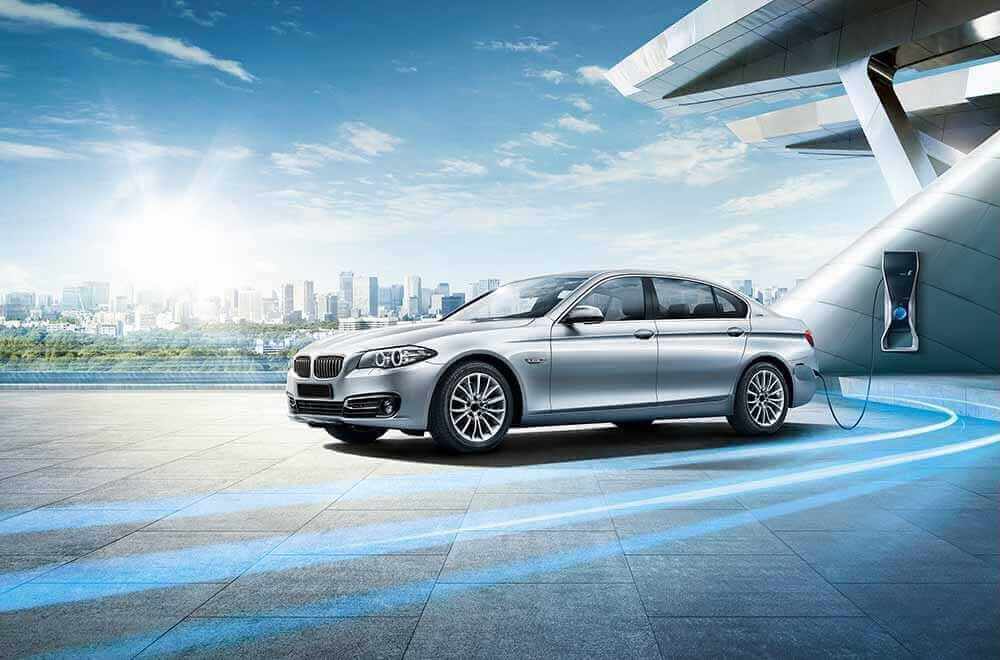
Future Fuels: A Race Towards Powering Future Cars
| 9 minutes read
For the past many years we are talking about Tesla, and we think electric cars are the future, but today we are going to talk about some alternative fuels options which also marked their strong presence in the market. Therefore electric vehicles are not only the option of future cars; many companies are in the queue to power future vehicles. As we know, we live in the crucial phase where we need to think about the future and beyond. With air pollution getting worse, and oil restoration is limited, car manufacturers are looking for alternative future fuels for cars. But the question is, what will power tomorrow’s cars?
In this article, we will throw some light on the fueling options discovered by many startups and other companies. Many nations are working on some projects where they talk about pollution, but in real life, people are struggling with the pollution and its consequences, not only this, the situation in the Middle East is also critical who is the primary supplier of crude oil.
By keeping all things in mind, this is the time where we need to think about the future fuels, so today we will talk about it. So get a coffee and kindly read till the end. We are sure this article will surprise you. Overall, it will give complete knowledge about our future cars and technologies and its technologies to power our future vehicles.
We are going to list some alternative fuels that can be a good option in the future and overall our scientists are researching more on it, and companies are also investing in their R&D. Some cars have been made for testing purposes. However, some are available in the market we know in the coming years they will get popular. People will realize the world has shifted from one technology to another.
Don’t worry; the car will not disappear only the technology will change, we simply mean the fuel procedure will change, some new alternative fuels will replace petrol and diesel cars. As we all know, today’s scientists are researching and developing tomorrow’s fuels.
Now the question is what fuel will cars use in the future? To answer this, here are the four most promising fueling options, you should watch out.
- Hydrogen: The space-age fuel
- Biofuels: Mother Nature to the rescue
- Electric: The highest possible option for the future cars
- Aluminum Air Battery: A Sustainable and Eco- friendly battery
Let’s begin:
1. Hydrogen: The space-age fuel
Pros
- Produces more energy-rich per kilogram than petrol or battery-powered electric cars
- Produces only water as exhaust
- Refuels faster than electric cars
Cons
- Very expensive to produce
- Difficult to store and transport
- Incompatible with current infrastructure
Bottom line
Although on paper it’s a tremendously promising fuel, high costs and problems with storage mean that a lot needs to be done and scientists are working hard to make hydrogen the fuel of the future.
Do you know hydrogen is an ideal fuel when its come to cover the maximum distance? In fact, when scientists needed a fuel that would go to miles, they chose hydrogen to generate and unleash that power on NASA’s Apollo missions — the fuel hydrogen was previously used as a propellant for the Saturn V rockets, while the fuel cells were used to charge the electronics inside the command modules — including the NASA’s Apollo 11 mission that landed on the moon in 1969. Hydrogen gives ample power that covers the long-distance, but a lot needs to be changed when it comes to a car.
Fuel cells may sound fancy and trending; they are almost quite similar to normal batteries. Like batteries, fuel cells produce electricity, meaning that any car that runs off a fuel cell is electric. Also, like batteries, fuel cells combine two chemicals that react to produce an electric current.
Till now, this situation sounds pretty rosy. As a fuel, it has some serious drawbacks or cons that need to take into consideration. Firstly, there are no ample natural sources of pure and clean hydrogen on Earth.
This means hydrogen must be manufactured from scratch and there is no other option to get fresh hydrogen. At this stage, the major advantage of hydrogen becomes a drawback, because hydrogen stores ample amounts of energy per kilogram, which as a result, it takes a huge amount of energy to produce.
We all know, hydrogen is a gas, and therefore, it needs to be compressed at very high pressure. This makes it crucial to transport and store. For example, to store a measly 5kg of hydrogen, the Honda FCX Clarity hydrogen fuel cell car needs a massive 171-liter tank, which compresses the gas at 340 times atmospheric pressure. Added to this massive tank’s weight is the weight of the fuel cell stack itself, which in the Clarity (model name) tips the scales at 67kg.
Finally, it becomes tough to compress a significant amount of hydrogen. Thus, a liter of hydrogen only typically contains about a third of the energy of petrol. This difference is firstly highlighted by the US-based motor company Ford hydrogen-powered Focus (car model), which has a maximum range of 250+km off a single tank of hydrogen. A petrol model Focus meanwhile will give as much as 700km on a single 55L tank.
Despite all these complications, many car manufacturers have produced prototype hydrogen fuel cell cars, including Fiat, Volkswagen, and BMW.
However, the big car manufacturer is arguably pushing hydrogen hardest and looking to make the best in the technology class hydrogen car model.
Also Read: 10 Interesting Facts You Probably Don’t Know About Elon Musk
2. Biofuels: Mother Nature to the rescue
Pros
- No new delivery infrastructure needed
- Renewable
- Can be carbon neutral
- Already in production and use
Cons
- May damage older cars
- Competes with food production
- Huge amounts of biomass required to meet the world’s fuel needs
Bottom line
Biofuels are already in use today, and many startups have developed a car running with biofuel technology. With next-level technological refinement and increased production, they’re potentially unstoppable in the market and carries a full potential to be an excellent alternative option to power future cars.
Keep your scepticism close at hand if you plan to dip into the unstable debate on biofuels. While biofuels promise a lot in various fields, their environmental impact is penetrating discussion.
Before we dig further, biofuel is a fuel that is derived from biological materials such as wood sticks, sugar, or oil. A different process is required to turn the biological material, known as biomass, into biofuels. This process requires energy, and unless this energy comes from a renewable source, biofuel production causes pollution.
The next problem is that replacing the world’s fossil fuels with biofuels requires a huge amount of new biomass. This also means eating into the world’s food chain of supplies as, traditionally, biofuels (like ethanol) have been made from food, such as corn.
Startups like Manta Biofuel, Celtic Renewables, Biofuel evolution and many other startups supply biofuel and can be used in cars like Toyota, Honda and many others. Currently, there are many car brands in the US currently running on biofuel.
British startup Biofuel Evolution introduces BeBlock, an in-situ system that produces low-carbon bioethanol out of households, agricultural, and commercial food waste. They plan to implement peer-to-peer (p2p) bioethanol networks using blockchain technology.
Not only this Indian airline SpiceJet operated India’s first test flight powered by biojet fuel, marking a new chapter in the fast-growing domestic aviation sector. The nearly 45-minute flight from Dehradun (a city in India) to the Delhi was operated with a Bombardier Q400 aircraft, partially powered by biojet fuel made from Jatropha plant. With the test flight, India has become one of the few countries and probably the first among the developing nations to use biofuel for flying planes.
Biofuels are the subject of scientific research and have received considerable government subsidies in the US and other major parts of the world. It is because it can be used with existing internal combustion engines, requiring no new infrastructure and new cars, just a new fuel production process.
Of all the renewable fuels, biofuels are currently ready for commercial use but in limited usage. In fact, many of you are likely already using it in your cars. In Australia, ethanol is combined in a 10 per cent blend with regular unleaded petrol, commonly known as E10.
Cars that are manufactured after 1986 can still run on E10, while most cars made before 1986 cannot run safely. The Australian Federal Chamber for Automotive Industries (FCAI) maintains a list of cars and that can safely run on E10.
Biodiesel isn’t that common in many parts of the world, but you’ll find it in some parts of the US and Australia, but biofuel will not serve the whole world as per the current number of cars on the road. Therefore it is crucial to increase the speed of biofuel availability.
3. Electric: The highest possible option for the future cars
Pros
- Highly tested and trusted technology
- Easy to charge
- Good for environment
- Electricity can be a renewable resource, and gasoline cannot
Cons
- Electric cars have a shorter range
- It can sometimes be challenging to find a charging station
- Recharging the battery takes time
Bottom line
The electric vehicle revolution is speeding up, and many companies are pulling their socks in the electric vehicle sector. Still, it is limited to some extent if we don’t get the appropriate infrastructure and technology.
As people’s thinking shifts from petrol cars to all-electric vehicles, visions of a brighter and futuristic world come into view. The UK government’s pledge to ban the sale of all new non-electric cars (petrol, diesel and hybrid vehicles) from 2035, highlights the drive to end the nation’s contribution to Climate Change by 2050.
Angelenos will welcome the first electric fire truck in 2021 — and in the coming years, electric sanitation trucks will be quietly gliding through neighborhoods to pick up garbage and recycling. More electric trucks will be delivering packages from warehouses to homes, air pollution-free.
Apart from this, electric vehicles are knocking on the door and ready to overtake petrol and diesel vehicles. But it is still limited to some particular countries, and the central challenging part of having electric cars is the lack of a charging point. Also, on average, you need at least 50Kw of power to charge your electric vehicles. Tesla is one of the most popular electric cars options available, but it is still only limited to some developed nations. But as per the source, they have knocked the Indian market as well. Apart from Tesla, there are many other startups company that are giving a tough fight to Tesla, some are, Rivian Automotive, Nikola Corp., Lordstown Motors Corp. and Bollinger Motors among them — seeking to make their marks.
When it comes to eco-friendly, electric vehicles leave no emissions out of an exhaust, electric cars are great for reducing pollution in cities. There are issues however with pollution created by producing the electricity in the first place, but this varies. A wind farm is vastly cleaner than a coal-fired power station and some energy companies offer “green” tariffs, using electricity produced from sustainable sources.
Manufacturing an average petrol car will involve emissions of around 5.6 tonnes of CO2, while for an average electric car that rises to 8.8 tonnes, according to estimates by the Ricardo consultancy. However, it says over its whole lifecycle the electric car would still produce 20% less emissions.
If we talk about the technology, we know it is the future-proof technology to power cars. However, there is still a lot that needs improvement, especially the battery and the required services, and we know lithium batteries degrade over time and lose some capability.
4. Aluminum Air Battery: A Sustainable and Eco- friendly battery
Pros
- The new battery is nonflammable
- It is safer for the environment than alkaline batteries
- The aluminum air battery can withstand more than 7,500 cycles without any loss of capacity
Cons
- Aluminum air battery could lose their charge quickly
- It is expensive
- It is not rechargeable
Bottom line:
Aluminum air batteries are among the lightest and most energy-dense electrochemical storage devices. They use an anode made from a pure metal and a cathode that uses oxygen from the air.
Advances in aluminum-air battery technology might allow electrically powered vehicles to become more realistic and competitive automotive options for many drivers. At present, most electric vehicles (EVs) are powered by lithium-ion battery packs and have a driving range of about 100 miles (160 km). After that, drivers have to plug into a 240-volt charger for six to eight hours for a full charge, find a quick-charge station and plug into a 480-volt charger for 20 to 30 minutes for 80% of a full charge. The aluminum-air battery consists of an aluminum anode in an electrolyte solution of potassium hydroxide and uses oxygen from air as the cathode. A selectively permeable membrane allows oxygen from the air to enter the cell but excludes gases such as carbon dioxide that would interfere with the battery’s function. When the battery is in use, the oxidation reaction of aluminum plus oxygen plus water produces aluminum hydroxide plus electrical energy (electrons).
Because aluminum is a lightweight metal and the cathode material, oxygen, does not have to be stored in the battery, an aluminum-air battery is considerably lighter than a comparable lithium-ion battery. It is estimated that 55 lb (25 kg) of aluminum will provide a driving range of about 1600 km and the entire battery will weigh about 200 lb (90 kg). By comparison, the Nissan Leaf’s 600-lb (270-kg) lithium-ion battery pack provides a driving range of about 160 km.
In March 2013, Phinergy, a developer of aluminum-air battery technology, test-drove a Citroen C1 (city car or mini) powered by a small lithium-ion battery and fitted with a 50-plate (55-lb) aluminum-air battery that charged the lithium-ion battery. The vehicle functioned like a hybrid by using the aluminum-air battery to extend its driving range. Israeli startup Phinergy used this technology in a commercial vehicle in 2017. Tesla Motors also has a number of recent patents and patent applications describing the use of an aluminum-air battery to extend the driving range of an electric vehicle by providing backup power to a non-metal-air battery that powers the vehicle.
What will be the future of the fuels?
If we keep aside the fossil fuels, the cheapest and fastest alternative fuel will win the market and not forget availability is also one of the primary reasons behind the fuel’s adoption.
Judging by these criteria, biofuels and at second spot, electric vehicles currently lead the race. But not to forget Aluminum Air batteries comes between first to second spot, because the aluminum-air battery has an attractive energy density. After all, part of the reactants come from the air, and it also boosts your vehicle power.
On the other hand, electric vehicles’ biggest problem is the lack of charging points across the USA; therefore, people generally charge their car from home. Electric cars come with many carmakers trialing or leasing electric vehicles. Electric car manufacturers like Tesla and some models of Mitsubishi are currently on sale in most countries.
Hydrogen cars are placed in last place as, outside certain parts of California, the infrastructure to support them simply doesn’t exist.
A sudden technological breakthrough might change the game if scientists find a cheap way to store a large amount of hydrogen. Who knows what the future holds.

Born in the family of entrepreneurs and have inherited the same. Started building applications in order to pay for my tuition. Later founded a tech company, marketing agency, and media outlets.




